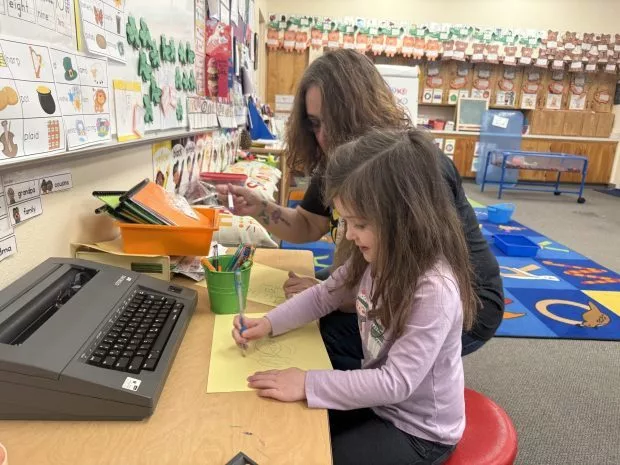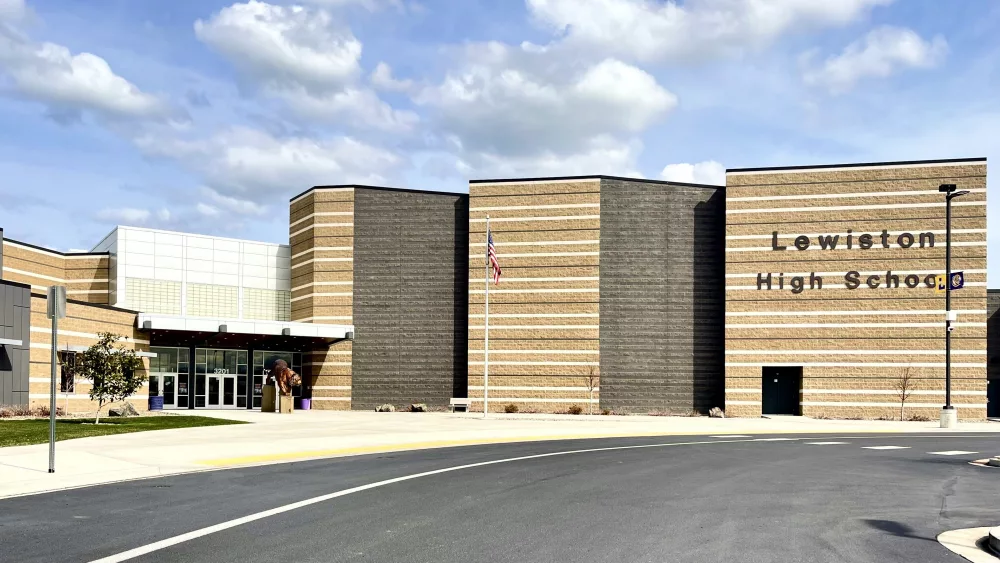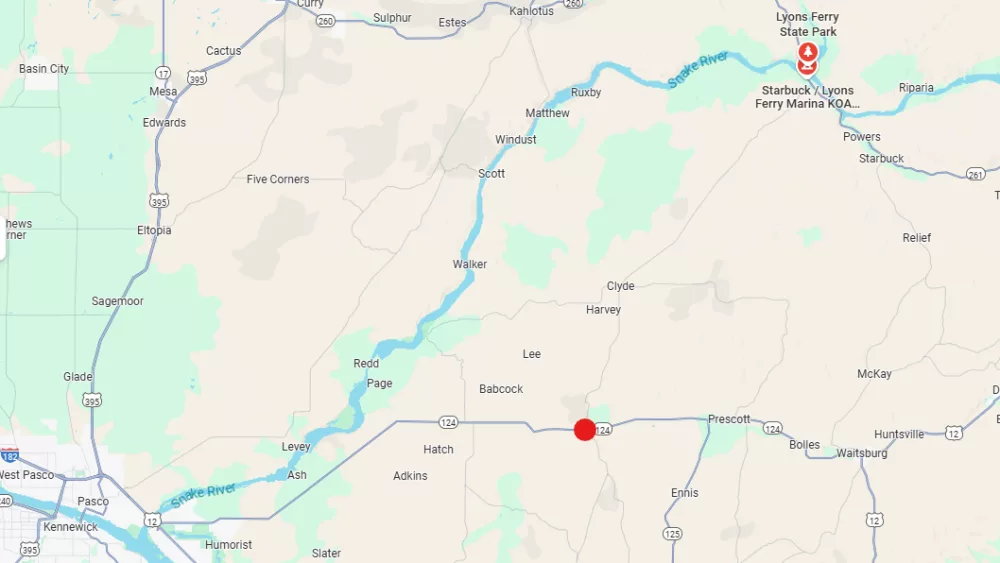Originally posted on IdahoEdNews.org on April 6, 2025
LEWISTON, ID – At the start of this school year, Jamie Williams’ preschool classroom was pretty quiet.
Many of her students were almost non-verbal and shy. Last month, the chattering of little voices could be heard in the hallway.
So far, the first year of the Webster preschool program is a success, said Williams and Peggy Flerchinger, director of special education services at the Lewiston School District.
Students know their colors, can count to 10, most can rhyme and almost all of them can write their names.
Those are big feats for any preschooler but an even bigger challenge for half of Williams’ students who qualify for special education services. The other half of her 12 students act as near-peers.
The developmental preschool program was recently renewed for a second year with a small expansion, Flerchinger said. She hopes the program will continue to grow and benefit not only the students but district employees as onsite childcare.

Lewiston has three preschools: Webster, one at its Normal Hill Campus, and a federally funded Head Start Program.
Nationwide, parents are feeling the childcare crunch with limited options, most of which consume large portions of their monthly budget. Idaho doesn’t fund preschool, leaving most districts with small developmental preschools largely funded by federal dollars. Districts are required to provide special education services for children ages 3 to 22, according to the Individuals with Disabilities Education Act.
Schools are jumping into the mix often because in-district daycare is a great tool for staff retention.
In Lewiston, retention and recruitment for employees is a goal in the district’s strategic plan. Williams teaches normal school day hours then an aide comes in early in the morning and after school to allow for a 7 a.m. to 4:30 p.m. schedule to meet working parents’ needs. The preschool costs $600 a month for near-peer students, about the median for daycares in the area, Flerchinger said. The price was set intentionally to not impact area daycares. Students who qualify for special ed services are covered with federal funds. The district is also pursuing grants to continue funding the program.
Students learn more than just academic skills but foundational life skills, like how to sit around a table with others for breakfast, to take their own coat on and off, and how to open a milk carton, Flerchinger said.
“My goal was to see if our kids grew more when they were immersed with normal developing peers,” Flerchinger said.”I think our near-peers have grown more as well.”
The program has also been transformational for Williams, a 31-year kindergarten and first grade teacher, who was feeling tired.
When she was asked to take on the preschool program, she welcomed the challenge.
“It’s just been a joy everyday to come in and we teach feelings, how to get along, life stills like how to put your own jacket on,” Williams said.
A huge part of why Williams believes her students have made such huge gains is the emphasis she puts on treating everyone the same, no matter their level of ability.
“Part of it is that everybody’s equal. There’s no difference. Nobody knows that there’s differences and that we’re all the same,” Williams said. “We all are just trying our best.”





